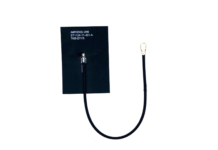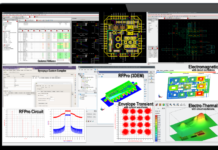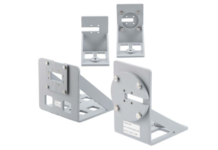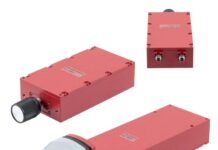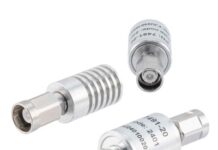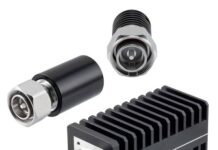
Pickering Interfaces, the leading supplier of modular signal switching & simulation solutions for use in electronic test & verification, today announced a new range of PXI/PXIe microwave relay modules capable of switching the 110 GHz signals associated with demanding RF & communications applications, including emerging technologies such as automotive radar. Launching at IMS, this extension to Pickering’s family of terminated SPDT microwave switches is the first to be offered in 110 GHz, delivering the highest RF switching performance available within a Pickering switching system. As operating frequencies evolve to ever higher levels, more of Pickering’s RF & microwave switching solutions will support 110 GHz to address the latest RF testing requirements.
The 40-781A-92x (PXI) and 42-781A-92x (PXIe) modules consist of either a single or dual microwave changeover switch payload, capable of switching up to 110 GHz in 50 Ω. They are available with external terminations, and connections are via front panel mounted high quality SMA 1.0 connectors. Externally terminated switches offer the advantage that the user-accessible terminations can be removed and replaced with higher-power RF loads for increased signal levels. This switch topology flexibility also allows alternative configurations to alter the switching functionality, such as terminated 4-port bypass (1 termination removed) and 5-port DP3T (both terminations removed).
The 40/42-781A-92x range features latching relays, minimizing the heating effects when the switches are energized (compared to failsafe switches), as only a pulsed signal is required for operation (since latching relay contacts retain their last set state when the power is removed). LED indication is provided, allowing a clear visual confirmation of the switch status – a useful feature for verifying system operation.
Steve Edwards, Switching Product Manager at Pickering, commented: “These new 40/42-781A-92x modules are particularly applicable to emerging microwave technologies, such as automotive radar – in addition to radar and satellite or short-range land-based secure communication testing applications. Although designed for microwave applications, the modules also have many uses across the RF spectrum, where extremely low insertion loss and ultra-high isolation are critical. They can also be used at lower frequencies, where power handling to 35 W (without termination) is required.”
An onboard relay cycle counting feature enables proactive “health” monitoring of modules for test system predictive maintenance. The number of operations per contact is stored on the module and can be used to determine if a relay is approaching EOL. This information could allow system connections to be revised so that signals applied to heavily used contacts are swapped with lightly used contacts to prolong the working life of the relay(s).
The 40/42-781A-92x range is supplied with drivers that allow support in all popular software programming environments. In terms of operating systems, all Microsoft-supported Windows versions and popular varieties of Linux are supported, as well as other real-time hardware-in-the-loop (HiL) tools.



